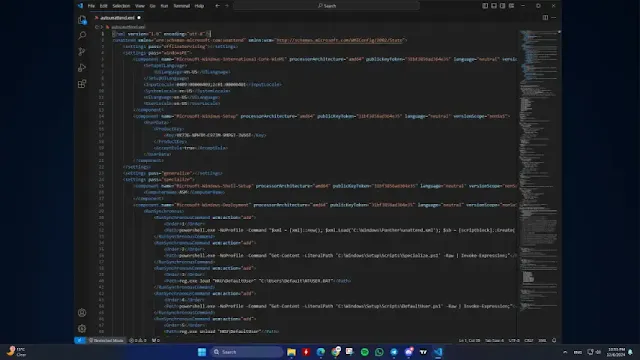If you're deploying Windows 10 and want full control over the setup process, creating an answer file (unattend.xml or autounattend.xml) is the way to go. This guide walks you through using the Windows Unattend Generator to build one without writing a single line of XML.
Step-by-Step: Building Your Windows 10 Answer File
The Windows Unattend Generator is a handy tool that helps you customize your Windows 10 installation by guiding you through various options. Here’s how to use it:
1. Region & Language
Choose display language, primary and secondary keyboard layouts, and home region.
You can automate or allow interactive selection during setup.
Select processor architecture (e.g. Intel/AMD 64-bit or 32-bit); multiple selections supported via Ctrl key.
2. Setup Preferences
Bypass Windows 11 checks (if applicable).
Allow setup without an internet connection.
3. Computer Name
Specify a custom name or let Windows create one.
4. Compact OS
Let Windows decide whether to use Compact OS.
5. Time Zone
Set it manually or let Windows detect automatically.
6. Disk Partitioning
Choose manual partitioning (recommended), automated formatting, or use a custom diskpart script.
Configure GPT/MBR, EFI System Partition size, and Windows Recovery Environment settings.
Warning: automated options will completely format disk 0.
7. Windows Edition
Pick the version of Windows 10 to install (e.g., Home or Pro).
8. User Accounts
Create local offline accounts with usernames, passwords, and group roles.
Or choose to add Microsoft or local accounts interactively during setup.
9. Account Policies
Set password expiration and lockout settings—defaults are fine for most setups.
10–11. File Explorer & System Tweaks
Customize file visibility, taskbar search box, Fast Startup, long path support, and more.
12. Virtual Machine Enhancements
Include VirtualBox, VMware, or VirtIO support.
13. WLAN/Wi-Fi Configuration
Automate setup, configure interactively, or skip if using wired internet.
14. Express Settings
Disable all for automation or configure manually.
15–16. Lock Keys & Personalization
Defaults are recommended unless you have specific preferences.
17–18. Bloatware & Start Menu
Remove unnecessary apps and clean up tiles/pins.
19. Defender Application Control
Stick with default configuration unless needed otherwise.
20. Finalizing Your Answer File
Once you've selected your options:
Click Download .xml file.
Place autounattend.xml at the root of your Windows installation USB drive.
Alternatively, for more control:
Use notautounattend.xml and run it manually via:
setup.exe /NoReboot /Unattend:D:\notautounattend.xml
Recommended for advanced setups or when avoiding automatic disk formatting.
With the Unattend Generator, setting up Windows 10 is no longer a chore — it’s a streamlined and precise process that puts you in control. Try it out and take the grunt work out of installation.

